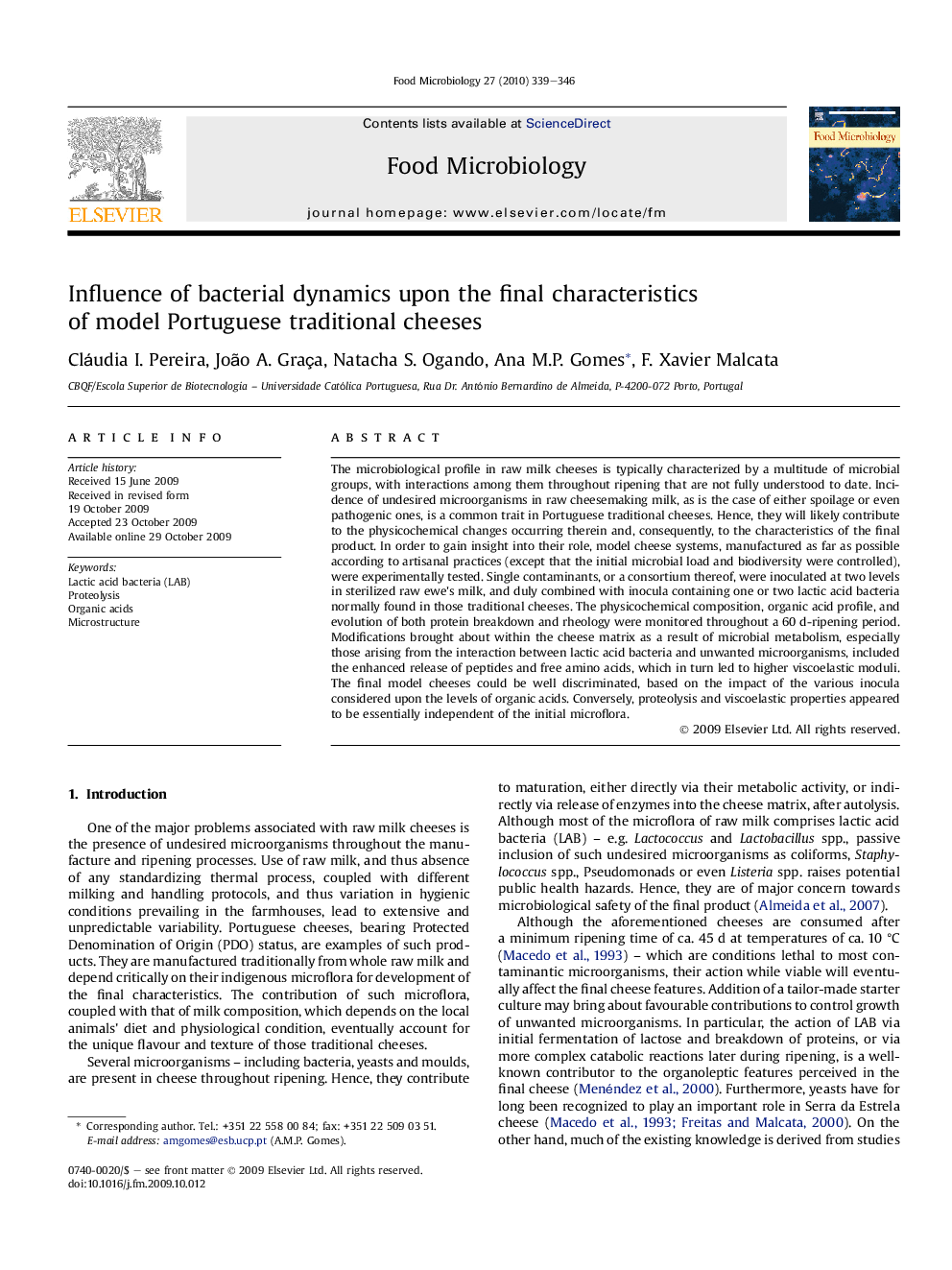| Article ID | Journal | Published Year | Pages | File Type |
|---|---|---|---|---|
| 4363421 | Food Microbiology | 2010 | 8 Pages |
The microbiological profile in raw milk cheeses is typically characterized by a multitude of microbial groups, with interactions among them throughout ripening that are not fully understood to date. Incidence of undesired microorganisms in raw cheesemaking milk, as is the case of either spoilage or even pathogenic ones, is a common trait in Portuguese traditional cheeses. Hence, they will likely contribute to the physicochemical changes occurring therein and, consequently, to the characteristics of the final product. In order to gain insight into their role, model cheese systems, manufactured as far as possible according to artisanal practices (except that the initial microbial load and biodiversity were controlled), were experimentally tested. Single contaminants, or a consortium thereof, were inoculated at two levels in sterilized raw ewe's milk, and duly combined with inocula containing one or two lactic acid bacteria normally found in those traditional cheeses. The physicochemical composition, organic acid profile, and evolution of both protein breakdown and rheology were monitored throughout a 60 d-ripening period. Modifications brought about within the cheese matrix as a result of microbial metabolism, especially those arising from the interaction between lactic acid bacteria and unwanted microorganisms, included the enhanced release of peptides and free amino acids, which in turn led to higher viscoelastic moduli. The final model cheeses could be well discriminated, based on the impact of the various inocula considered upon the levels of organic acids. Conversely, proteolysis and viscoelastic properties appeared to be essentially independent of the initial microflora.
